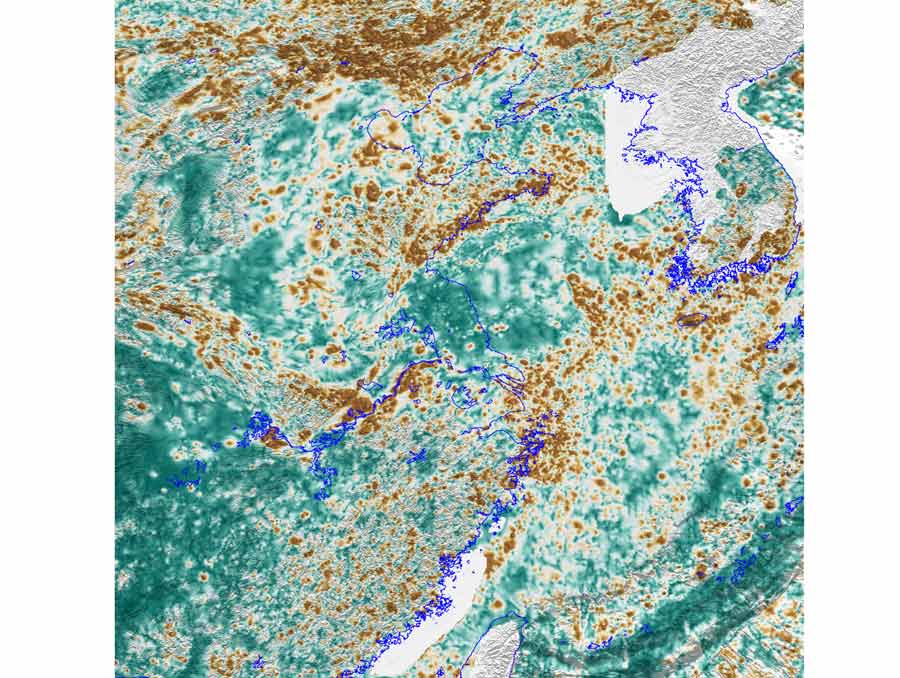Scientists recently published new ideas about why Earth’s toughest, oldest continents persist. These continents, known as cratons, have been on earth for more than two billion years. Andrew Zuza, an associate professor in the Nevada Bureau of Mines and Geology, was part of a team of researchers who proposed a new mechanism for the destruction of cratons and provided rationale for their longevity.
The research article, published in the Proceedings of the National Academy of Sciences earlier this year, focuses on the North China craton. The craton is slowly being destroyed, and the geologists shared what they think is causing its destruction.
“Cratons are the cores of the continents that have survived for billions of years, and they don’t seem to be destroyed or modified or consumed during normal plate tectonic processes,” Zuza said.
Cratons are thick and relatively cold, making them very durable during earth’s history. Continents, and their craton cores, float on the surface of the earth’s molten mantle, like ice cubes floating at the top of a glass of water.
The building of cratons is typically thought to occur due to progressive thickening of the continental crust, such as during continental collisions. Mantle plumes, which are columns of heated material that rise up from the mantle into the Earth’s crust, may also be important in developing cratons. These plumes can move products like iron from deep within the Earth upward into the crust of the continent, strengthening it. This process also makes the bottom of the continent less dense, allowing it to become more buoyant. The buoyant, floating craton is therefore less likely to be subducted beneath other continents and more likely to persist over time.
Cratons can also heal. When volatile materials like water are introduced into the craton due to subduction, they become less stable, but a mantle plume can melt, dehydrate, and restrengthen the cratons. The peripheries of a craton serve as crumple zones, getting chipped away during collisions with other continents instead of causing the interior of the craton to deform. Healing and focused crumpling seem to be effective ways for the cratons to survive for billions of years.
Several decades ago, researchers studying the North China craton realized that it was thinner than it should be and that it was relatively warm, indicating that the craton was actively being destroyed. This provided a compelling example for how cratons may be destroyed.
Geologists believed that the North China craton was being destroyed because of subduction of the Pacific plate, which introduces water to the mantle. Zuza and his colleagues were troubled by this explanation, as subduction is the most common process on earth. Almost half the world’s cratons are being impacted by subduction zones today, and they haven’t been destroyed.
“If you go back 200 million years, basically every craton on Earth has been near a subduction zone,” Zuza said. “So that's not a very satisfying explanation for the destruction of the North China craton.”
Instead, the authors argue that multiple processes acting on the North China craton have led to its gradual destruction. The researchers utilized data from aeromagnetic mapping, which is measuring magnetism from an airplane, geologic maps that identify different rock types in an area and seismic reflection profiling to determine the thickness of basins, using technologies from the oil and gas industry. They needed all three data types to examine the entire continent, parts of which are under water or beneath thick sedimentary basins. Their hypotheses were that a weakened craton like the North China craton would have overlapping signals of young granitic intrusions, splotchy magnetic signals reflecting such intrusions, and deep sedimentary basins. The datasets were well-aligned and confirmed the researchers’ hypothesis. The next step was interpreting the data.
“Geology inherently is a super noisy science where we have these giant data sets that span entire continents, with multiple ways to interpret them,” Zuza said. Plus, the entire history of Earth has allowed lots of time for changes.
But the geologists were able to see that the North China craton was especially beat up compared with the adjacent South China craton that remained relatively intact. To explain these differences, the scientists turned to their differing geologic records. Over the last 500 million years, the North China craton has been chewed up by subduction zones and continental collisions, without opportunities to heal. The recent start of subduction of the Pacific plate finalized the destabilization process of the North China craton. The South China craton had a much more inactive recent geologic history and it has been spared from destruction, despite also experiencing Pacific subduction. Zuza referred to this gradual destruction of the North China craton as tectonic attrition.
“What we argue is very unique processes impacted the North China craton that led to its destruction,” Zuza said.
This explanation accounts for the persistence of cratons over the Earth’s billions of years of geologic history and provides an evidence-backed explanation of craton destruction, allowing a full understanding of the life cycle of cratons.
This process takes place over hundreds of millions to billions of years, so why does it matter to humans who have only been around for 0.007% of Earth’s history?
Zuza points out that cratons are important for economic mineralization. For example, the plumes that helped shape the African cratons facilitated the diamond-forming processes that make Africa home of the world’s largest diamond reserves.
“A lot of the important metals and minerals we use are found in cratons,” Zuza said. “Understanding where they are and how they evolve can help us better understand how to explore for those.”
Another reason it’s important to understand cratons is because of their implication in earthquake activity.
“If we have this buoyant craton that’s colliding to build a mountain belt, understanding how that collision evolves and whether parts of the continent are subducting or not actually helps us understand seismic hazards,” he said.
Zuza also pointed out that understanding these massive geologic processes is important to understanding smaller-scale processes.
“Holistically understanding broad plate tectonic processes helps us basically understand anything in geology,” he said.
Zuza is continuing to study cratons and their evolution. He published a series of papers with colleagues about stable blocks of Asia that aren’t deforming in which they argue the continent is actively becoming a craton over the last couple hundred million years, counter to the notion that most cratons formed long ago. He is also investigating the longevity, and potential modification, of cratons in North America that may stretch beneath eastern Nevada.













